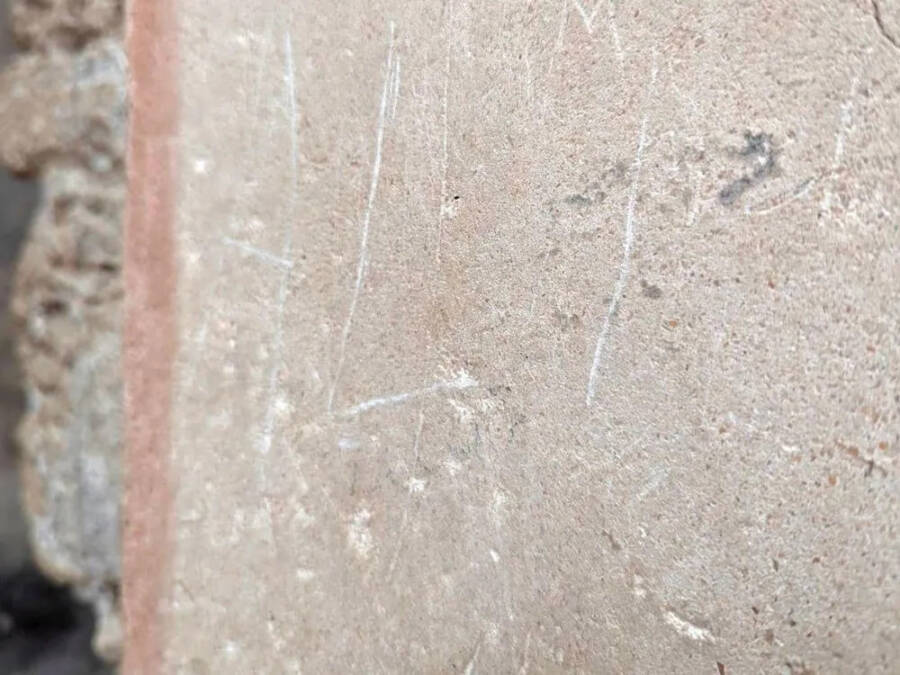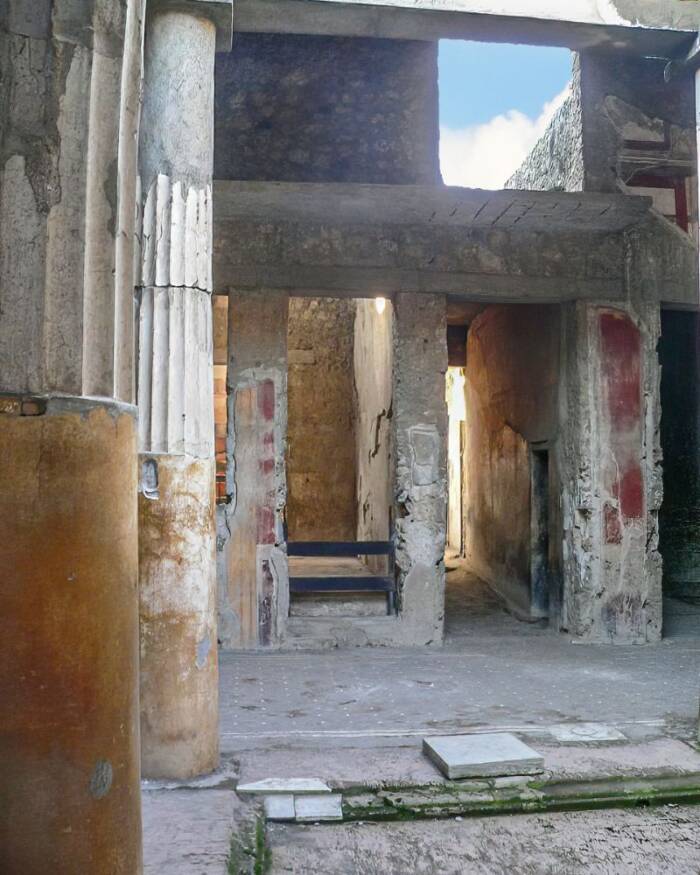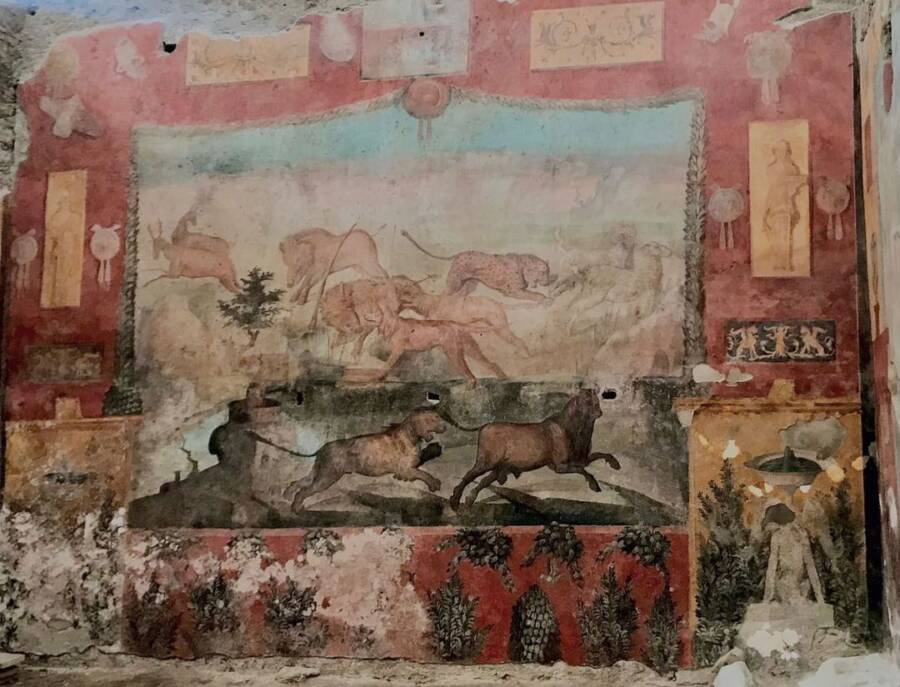The tourist from Kazakhstan carved the letters "ALI" into a plaster wall at the House of Ceii before authorities stopped him, and now he will have to pay for repairs to the ancient structure.

Pompeii Archaeological ParkA tourist tried to carve his name into a plaster wall in the House of Ceii.
On June 22, 2024, a tourist visiting Pompeii Archaeological Park in Italy was caught carving his name into the ancient plaster wall of the House of Ceii.
Thankfully, workers were able to notify the authorities and arrest the tourist before he could damage any additional historical sites.
This event was just the latest in an alarming new trend of defacement of historical sites in Italy and has prompted the strengthening of laws and penalties for the crime.
A Tourist Is Arrested For Carving His Name Into The House Of Ceii
On June 22, a tourist from Kazakhstan was caught carving his name into a wall in the House of Ceii in Pompeii.
He managed to etch the letters “ALI” into the ancient plaster before staff members could stop him. Pompeii Archaeological Park workers notified the Carabinieri, Italy’s law enforcement agency, and had the man arrested.
“Unfortunately, even today, we find ourselves commenting on an uncivilized and idiotic disgrace caused to our artistic and cultural heritage,” Gennaro Sangiuliano, Italy’s culture minister, stated, according to Artnet.
Just this year, the Italian government passed a law that increased punishment for damaging cultural heritage sites. The new legislation raised the maximum fine from $16,000 to $43,000.

Wikimedia CommonsColumns surround a fountain inside the House of Ceii.
Although the tourist is no longer in custody, he will be required to pay for the repairs to the section of wall he defaced.
“Thanks to the new law that I strongly supported, the perpetrator will be forced to repay the costs of fully restoring the damage caused,” Sangiuliano said.
The Italian government has decided not to pursue legal action but instead handle this issue administratively. Overall, they hope that this case serves as a warning to all tourists not to damage Italy’s historic sites.
Italy’s Troublesome History With Defacement Of Ancient Sites
This most recent act of vandalism occurred at the House of Ceii, a home that was likely owned by a magistrate named Lucius Ceius Secundus. It is one of only a few structures from the second century B.C.E. still standing in Pompeii.
The building features vibrant frescoes of animals in battle and unique architecture that tourists can walk through and enjoy. Unfortunately, its defacement is just one example of many vandalism incidents that have recently occurred across Italy.

Italy’s Ministry of CultureA fresco inside the House of Ceii.
Just a few weeks ago, a Dutch tourist wrote in permanent marker on a wall in Herculaneum. Last summer, British tourists carved “Ivan+Haley 23/6/23” into a wall at the Colosseum. Weeks later, a Swiss woman also etched her name into the Colosseum.
With this rise in the defacement of monuments by tourists — alongside increased threats of damage from climate activists — Italy has passed a new law increasing fines for damage at historical sites, and officials are strictly enforcing it.
“Every damage is a wound to our heritage, to our beauty, and to our identity and this is why it must be sanctioned with the utmost firmness,” Sangiuliano noted.
Now, workers at historical sites across Italy are on alert to protect these important areas from further damage.
After reading about the tourist who carved his name into a wall at Pompeii, look through 39 images of the bodies of Pompeii that are frozen in time. Then, read about nine archaeology news stories that reshaped our understanding of history in 2023.





